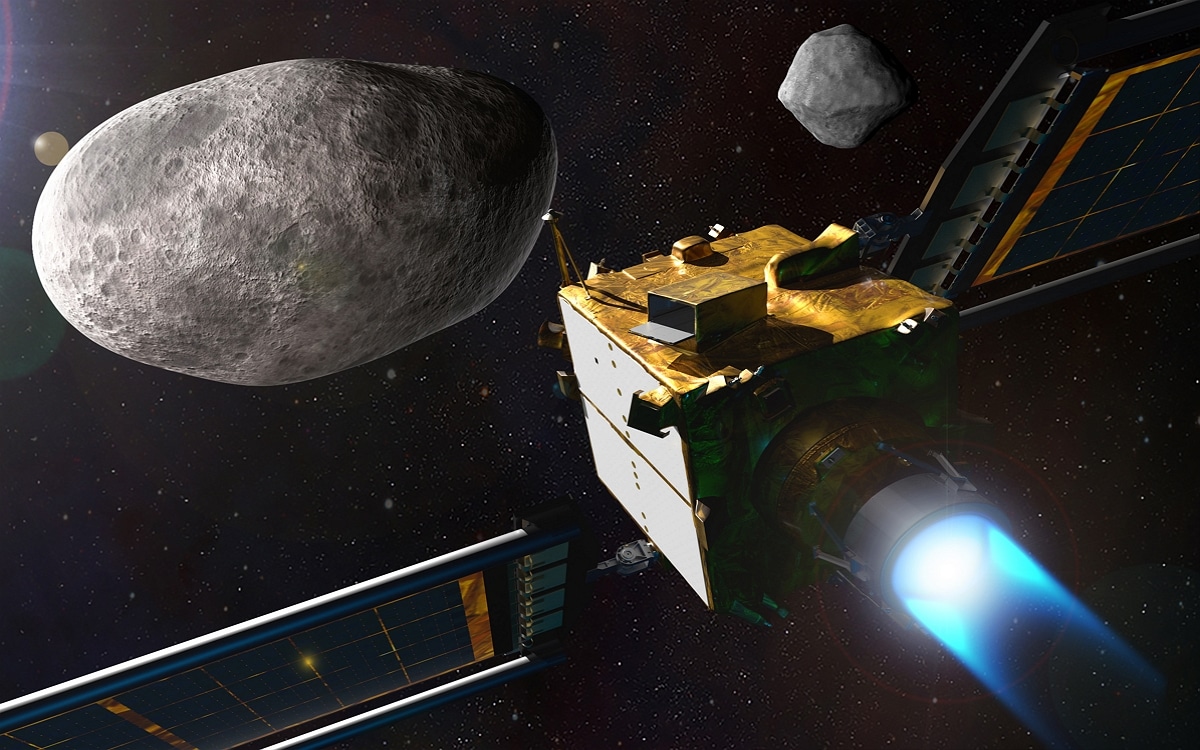
NASA has just announced that its first test of a potential planetary defense system has been a notable success. Thanks to the DART mission, the space agency was able to deviate the trajectory of an asteroid.
NASA on Tuesday celebrated the success of a mission to deflect a distant asteroidin a test that looks like something out of a science fiction movie about humanity’s ability to prevent a cosmic object from devastating life on Earth. The refrigerator-sized Double Asteroid Redirection Test (DART) impactor deliberately crashed into the lunar asteroid Dimorphos on September 26, pushing it into a smaller and faster orbit around its big brother Didymos , announced Bill Nelson, head of NASA.
It took several consecutive nights of telescope observation from Chile and South Africa to determine how much the impact changed the asteroid’s trajectory. The asteroid in question did not pose a threat to Earth in any way.it was just a test.
Read also – SpaceX: Elon Musk unveils plans for Starship, the rocket that will take humans to Mars
NASA can now protect Earth from asteroids
Before impact, Dimorphos revolved around its neighbor like a clock: one revolution every 11 hours and 55 minutes. If the DART test was successful, the evidence would be a change in that orbital period, showing that the tiny spacecraft pushed the asteroid onto a different trajectory.
The team would have considered a 10-minute difference a success, NASA chief Bill Nelson said. However, DART visibly exceeded all the expectations of the experts, since it actually shortened the asteroid’s orbit by 32 minutes. Dimorphos now only takes about 11 hours and 23 minutes to circle his partner.
Thanks to the conclusive results of this planetary defense test, NASA is therefore certain of being able to deflect the trajectory of small asteroids that would threaten life on Earth. The scientists behind the DART mission will get even more detailed information from the European Space Agency’s HERA probe, whose launch is scheduled for October 2024 and which will meet the couple of asteroids at the end of 2026. In the meantime, all eyes are on SpaceX, which should soon launch its giant Starship rocket, as well as the Artemis 1 mission which will soon leave for the Moon.


